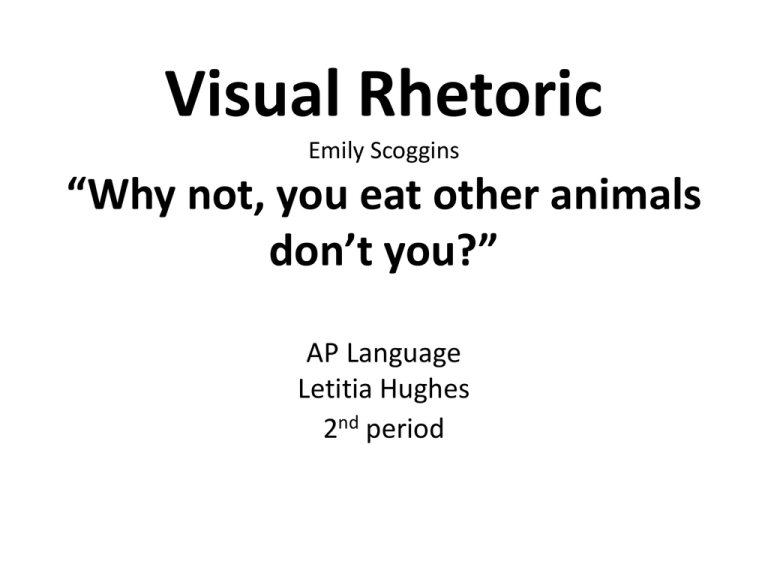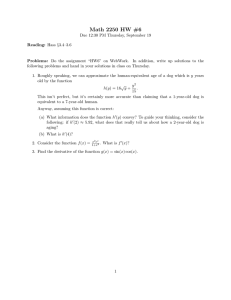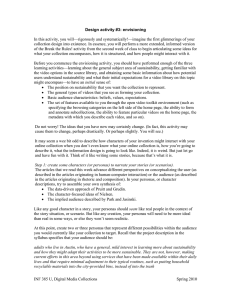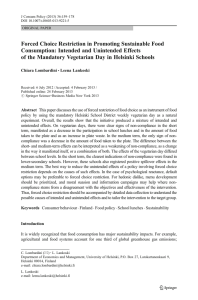Visual Rhetoric “Why not, you eat other animals don’t you?” AP Language
advertisement

Visual Rhetoric Emily Scoggins “Why not, you eat other animals don’t you?” AP Language Letitia Hughes 2nd period Background information • This is an ad from the Vegetarian Society and it was featured in Britain, Korea, and Toronto. • Since it has been featured in Toronto over 5.7 billion people have seen the ad and Kimberly Caroll, an organizer of the campaign, said that she gets hundreds of posts and emails about people going vegetarian everyday. What is the purpose of the Ad? • I believe the purpose of this ad is to try and make an actual connection to people, specifically dog owners and convince them that every animal is important and shouldn’t be sacrificed for people to eat. Who is the audience? • The intended audience is specifically people that aren’t vegetarians, and more specifically dog owners or anyone that has a pet, and wouldn’t think about eating them. Does omitting the words change the meaning of the picture? • Yes, taking out the words does change the meaning because now it’s just an innocent dog sitting on a plate that might be eaten and you don’t know it’s for the vegetarian society. Ethos • The Vegetarian Society is the Ethos in the ad. Pathos • The pathos in the ad is the sympathy we feel for the innocent puppy and the depressing thoughts when we think about eating one of our own pets. Logos • The logical appeal in the ad is the fact that we would never actually think about eating a dog because they are pets for us, but in other places such as Korea it happens on a daily basis. Citation • Caroll, Kimberly. “Why not, you eat other animals don’t you?” Treehugger.com. Discovery Communications, 2009. Web. 11 Nov. 2012.







